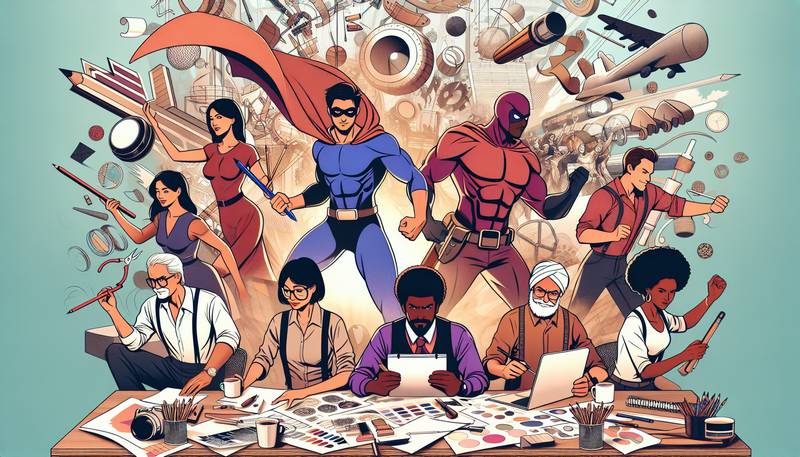Design Activism: Creating for Social Change

A World Shaped by DesignSomewhere between a cup of coffee and a not-so-secret obsession with beautifully designed products lies the heart of design activism. Designers today are more than just visual magicians conjuring up pretty pictures; they are the architects of social change. Think of them as the superheroes of the creative world, capes optional but strongly encouraged. They’re wielding their sketchpads like swords, battling societal issues with a fierce determination to make the world a better place—or at least to make it look good while doing so.Understanding Design ActivismAt its core, design activism is about using design as a tool for social transformation. Whether it’s creating awareness around environmental issues or amplifying marginalized voices, this movement highlights the role of design in addressing societal inequities. It’s a little like cooking but with ideas instead of ingredients; the right mix can lead to a savory dish of social progress. Design activists engage in a wide range of practices, including graphic design, urban planning, and product design, often merging their creativity with activism to generate a greater impact. The goal is to inspire change, provoke thought, and sometimes just to get people talking—or arguing about something other than the weather.Designing for Good: Why it MattersWhy should anyone care about design activism? Let’s face it, the world can often feel like a giant game of Jenga, where one wrong move could send everything tumbling down. Design has the power to stabilize that tower, giving people the tools to communicate vital messages effectively. By harnessing visual language, designers can create materials that are not only aesthetically pleasing but also loaded with meaning. This can include anything from infographics about climate change to protest posters that make you want to march for justice while simultaneously thinking, “Wow, this is a great design!”Tools of the TradeDesigners often use a variety of mediums and methods to promote their causes. Here are a few common tools that aid in the design activist’s arsenal: - Visual Storytelling: Engaging narratives combined with powerful imagery can capture attention and communicate messages more effectively than a thousand bland reports.
- Social Media: Platforms like Instagram and Twitter serve as stages for spreading ideas and rallying support. Who knew cat memes could help save the planet?
- Workshops: Teaching others the principles of design can empower communities, making everyone a potential designer for change. Yes, that includes the guy who still can’t draw a stick figure correctly.
- Collaborations: Combining forces with organizations, other creatives, or even local governments can amplify reach and impact. Think of it as the Avengers assembling, but for social change.
Case Studies: Success StoriesIn the realm of design activism, success stories abound, showcasing the transformative power of thoughtful design. Take the 'I Voted' sticker campaign from past elections. Simple, yet effective, these stickers mobilized individuals to engage in the democratic process simply by making them feel cool for voting. Wearing one felt less like a duty and more like a badge of honor—like sporting a trendy new hat that also happens to support civic engagement.Another notable example is the 'Love Has No Labels' campaign, which aimed to promote diversity and inclusion. Through clever use of visuals, it showcased people of various backgrounds embracing each other, reminding us that love, much like bad coffee, comes in many flavors. These cases illustrate how effective design can incite action, change perceptions, and shed light on important issues—all without requiring a cape.Designing a Better FutureThe future of design activism looks bright, and not just because of the fluorescent lighting in most design studios. As more designers recognize the importance of integrating social responsibility into their practices, the potential for real change expands exponentially. Designers are not merely creating; they are sparking conversations that matter, igniting movements, and ultimately crafting a more equitable society.Shaping the future through design means understanding the world around us and responding with creativity and compassion. Whether it’s reimagining a city park or redesigning a product to be more sustainable, the opportunities for making a difference are endless.Wrap It Up: Design to the Rescue!With a world full of challenges, design activism emerges as a beacon of hope and innovation. Designers have the unique ability to turn the most pressing social issues into visual narratives that resonate with people. Just imagine if everyone embraced this power—the possibilities would be as endless as the caffeine in a designer’s cup! So, while the world may have its struggles, it's comforting to know there are people out there wielding creativity to save the day, one design at a time.
|
|







